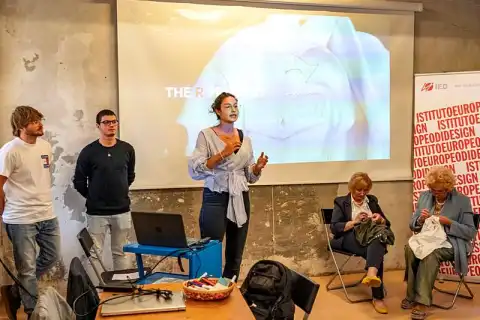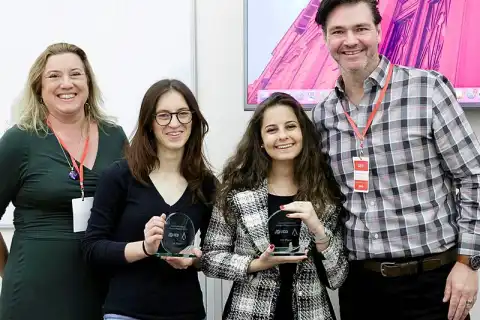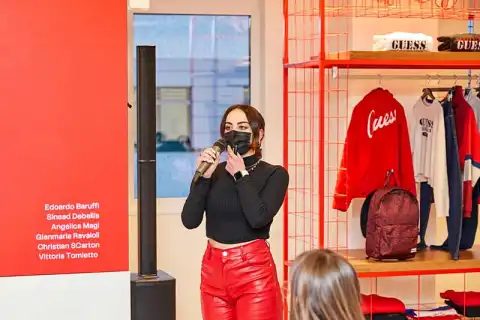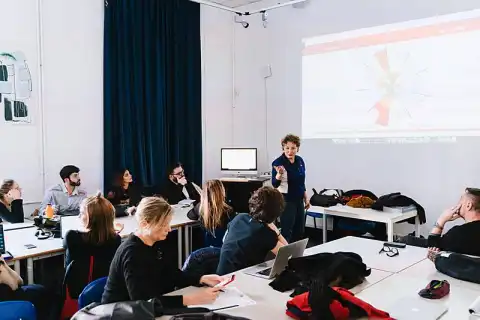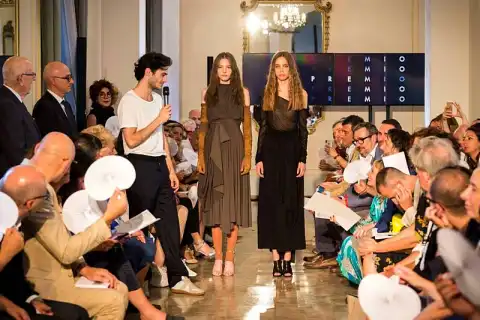Master of Arts - Responsible Fashion Design
- 2 years
- Duration
- Upon request
- Price
- Rolling admission
- Start
- Rolling admission
- Deadline
- Master
- Degree
- Campus
- Format
- Milan / Italy
- Location
Program description
The goal of Fashion Design is to limit tendencies of overproduction and overconsumption by providing insight into the entire fashion system, from production resources to the manner in which products are shared and used by communities.
By taking a critical look at the ideas of design, production, distribution, communication, and disposal methods, this course aims to promote responsible and sustainable fashion by exploring the project design skills involved in creating fashion collections. Inclusion and innovation will play an integral role in all projects, and we will pay close attention to details like product longevity, circularity, and Ecodesign.
As a foundation, this course examines the new circular textile strategy laws enacted by the European Union. It then offers an interdisciplinary approach to sustainable project development, allowing students to build zero-waste models and experiment with new materials in order to meet these regulations. The result will be a shift in the fashion industry's project practices that prioritize ethical and social considerations above everything else.
Program structure
1st year
- Design methodology (the EU strategy for circular and sustainable textiles)
- Materials typology (the textile materials supply chain and the socio-ecological impact of textile production)
- Fashion design 1 (ecodesign – man and woman collections)
- Fashion materials culture (innovative and artisanal techniques and materials)
- Ecodesign (experimentation with an upcycling project)
- Model building (patternmaking techniques)
- Digital modelling techniques - 3d computer software (digital representation of garments)
2nd year
- Style, history of art and costumes (in-depth study of the history of costume and artistic movements)
- Fashion design 2 (design with a purpose)
- Accessory design (hat design, millinery)
- Art direction (innovative artistic curatorship of fashion projects)
- New materials technology (experimenting with innovative materials)
- Sociology of cultural processes (study of cultural phenomena and their repercussions on costume)
- Elective subject
- English (fashion terminology)
- Final project
Price
Requirements for applicants
Admission requirements
For the Master of Arts (DASL) in Responsible Fashion Design. Circular Practices for the Fashion Industry direct admission is foreseen for candidates coming from study courses in the following areas: Fashion Design and Textile Design. Candidates from other disciplines may be admitted following assessment of their preparation, according to the technical requirements specified below.
Software knowledge and technical skills requirements:
- Data processing and analysis: in-depth knowledge of Microsoft Excel for data management, analysis and charting.
- Graphics and Layout Design: skills in the Adobe suite, with particular emphasis on: Adobe Photoshop: Skills in manipulating and editing images. Adobe Illustrator: Skill in creating and editing vector graphics. Adobe InDesign: Skills in designing layouts for print and digital publications. Knowledge of one or more of these softwares is necessary; familiarity with the entire suite is considered a plus.
- Illustration and development of design concepts: ability to use technologies and tools that assist in illustrating and developing sketches, prints, and mood boards. This includes familiarity with specific digital drawing software or graphic design tools.
- Fashion and Design Techniques: knowledge of sewing and pattern making, essential for the creation of clothing items. Hand drawing skills, essential for creating fashion sketches and illustrations.
About the university

Since 1966, we have been the largest Higher Education Network in the creative area to keep both a worldwide perspective and a strongly Italian cultural matrix.
Our educational strategy has evolved over time, but at its core remains the same: we mix theoretical study with hands-on experience and the expertise of working experts. One of the things we emphasize in our classes is always thinking ahead, in the here and now. We are a diverse, multidisciplinary institution that views design as a tool for social transformation.
Among the many international academic networks in which we participate are Cumulus, Elia, and WDO, just to name a few.
Campuses
In the 1970s and 1980s, we expanded to Rome (1973), Cagliari (1984), and Turin (1989) in Italy.
Beginning in 1994 with the Madrid campus and continuing on to Barcelona in 2002, Spain's modern era began in the 1990s.
The Group also spread internationally, establishing a presence in Sao Paulo, Brazil, in 2005, and then in Venice, Italy, in 2007, Florence, Italy, in 2009, and Como, Italy, in 2009, with the acquisition of the Aldo Galli Academy of Fine Arts. The Group expanded its footprint in Brazil in 2014 by renovating the Cassino da Urca and opening a campus in Rio de Janeiro; in 2020, the Group will expand its presence in Spain by purchasing the Centro Superior de Diseo Kunsthal in Bilbao.
Read more about IED Istituto Europeo di Design, Italy, Spain, Brazil
